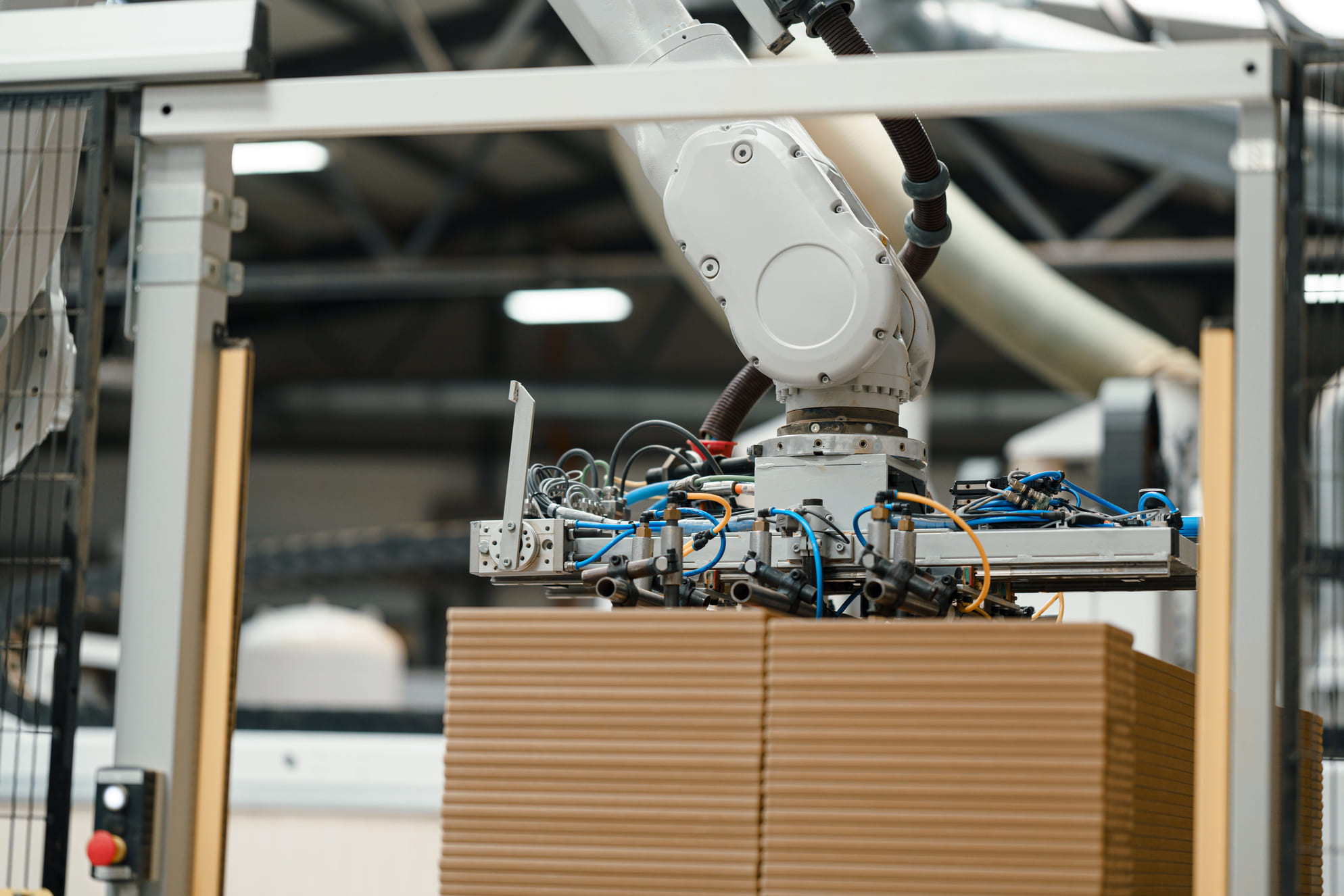Hydrogen: the new resource for Industrial Sectors
The potential and challenges associated with hydrogen production have intrigued businesses involved...
The use of robotic systems in the Food & Beverage industries has undoubtedly led to an optimization of activities, both in transportation and packaging phases.
What are the advantages and what types of robots are available in the food market?
There has been an exponential growth in the use of automated solutions, which, thanks to robotic systems, have allowed for rapid adaptability. The use of these systems brings great benefits to packaging and wrapping processes.
Robots are highly precise in picking and packing operations: greater precision leads to reduced errors and higher quality. Thanks to their ability to operate at high frequency, repetitive operations maintain the same required quality standards.
The systems supporting packaging activities also exploit the execution speed of robotic arms. This results in an increase in production and more effective adaptability to market demands. The systems are fast and accurate, providing valuable support in reducing work cycles.
In addition to reducing times, the systems utilize extreme precision in operations, including dosing and packaging actions. In some cases, position sensors and 3D detection sensors are used to check the final product quality. There are vision systems connected to recognition software that identify defective products through continuous quality control. Moreover, due to their flexibility, they can be programmed to handle various types of packaging.
Robots prove to be quite versatile, allowing continuity even when paired with other machines in various processes. Industrial processes can thus benefit from an increase in the final product's safety and a very low risk of contamination.

Robots can be integrated into every part of the industrial process, from primary operations to final ones like palletization. Automated solutions, both modular and complete, can be customized according to the demands of companies. Articulated robots are among the most widespread and are found in lines dedicated to packaging.
Among the types of robots supporting automated activities, we meet:
Robotic arms, versatile and highly precise. Extremely flexible, they allow multidirectional movement suitable for different needs.
Delta robots, also fast and with accurate movement. In high-production contexts, they manage to meet the demands for small-size packaging.
Collaborative robots, or Cobots, are designed to work in collaboration with production staff. Thanks to advanced sensors, they can detect the presence of humans and ensure a safe and hazard-free workflow.
Artificial vision systems, highly specialized in detecting any inaccuracies or errors in the packaging phase. Very reliable, they perform extremely precise quality control.
Industry-specific robots, designed for certain functions and specific reference contexts.
The new challenges in the packaging sector require systems to optimize operations and the energy efficiency of machinery. Robots, in addition to ensuring greater food safety and traceability, enable more sustainable production with less waste.
For some years now, packaging has been the focus of consumer attention, who seek "eco-sustainable" packaging.
It's important that it is produced with biodegradable materials and is fully recyclable, even better if derived from organic sources. Many consumers opt for eco-friendly packaging because their purchase contributes to reducing CO2 emissions.
Preferred materials include paper, cardboard, cellulose pulp, compostable bioplastics, and innovative materials.
In addition to using these materials for packaging and shipping, many companies influence consumers with greener practices. Responsibility towards the environment is transforming into growing awareness. Sustainability, in addition to guiding consumption habits, becomes an opportunity for companies wishing to approach customers sensitive to the cause.
The potential and challenges associated with hydrogen production have intrigued businesses involved...
Compressed air is one of the safest and most reliable technologies used by many companies across...
Compressed air systems are safe and reliable solutions widely used in production facilities....